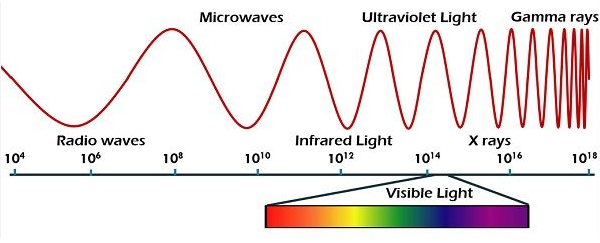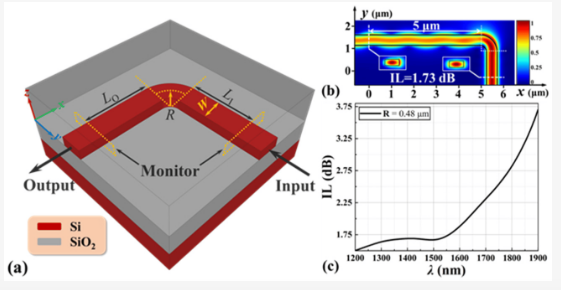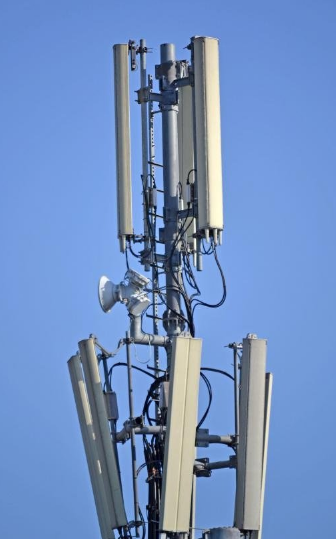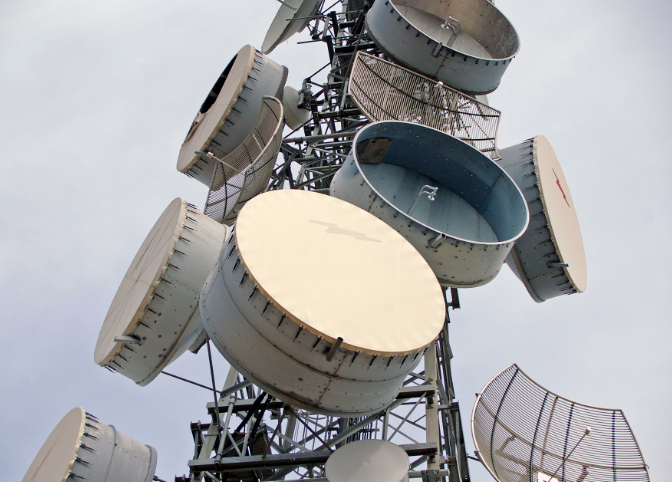RF waveguides provide low signal loss, handling as little as 0.1 dB per meter, enabling efficient, high-quality transmission over long distances. They support high power levels up to several kilowatts continuously, offer minimal signal dispersion, and allow precise control of multiple signal modes. Their robust construction ensures durability in harsh environments, enhancing reliability and reducing maintenance costs.
Table of Contents
Low Losses
Waveguides provide much lower transmission losses than any other type of RF transmission line, such as coaxial cables. This is especially important for high frequencies. In many cases, system design and maintenance neglect the difference in he transmission losses because the type of RF transmission lines is a minor detail in comparison to the broad design of the system. Still, this can be critical for systems that need to maintain the strength and quality of the signal, transmission distance, no distance, and power loss and others. This is a critical concern for television and radio broadcasting and satellite communication.
The use of the c-band 4-8 GHz as an example is quite illustrative of how much the reduced loss matters. The loss in attenuations per meter is around 0.2 dB for common coaxial cables used by engineers in need of affordable and convenient technology. Still, the use of the waveguide, which clamps the signal’s emission, reduces the attenuation to 0.1 dB. This means that satellite systems can transmit signal further without any power loss and repetition, and without signal power declining, on the same power levels.
The above multiplication implications should not be underestimated. The savings that come with it can be estimated on the less frequent replacement of waveguides due to the wear and tear of the elements, and due to nature damage. Furthermore, in television broadcasting, the distance between the UDP and the transmitters might be as long as a few kilometers in massive broadcasting g systems. Multiply this by the length of the transmission distance and the use of these technologies allows the company to save on frequent replacing of power amplifying elements, allowed by the reduced waveguide use that can be found in lesser maintenance costs.
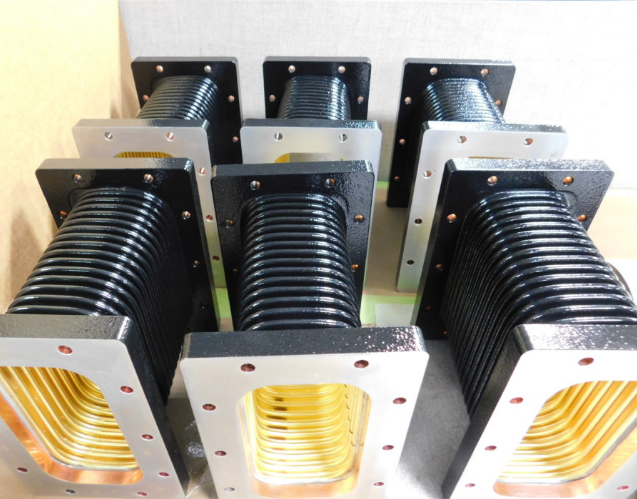
High Power Handling
Waveguides are characterized by their ability to carry very powerful levels of power without degradation. Thus, they are typically used not only in radar systems but also in broadcasting high-powered transmission systems. Waveguides can carry power up to several megawatts of the pulsed signal in the case of approximately five kilowatts of continuous signals. On the contrary, coaxial cables can only handle up to a few kilowatts. As a result, connecting a radar installation with the help of waveguides leads to reduced losses and enables radar systems to work from longer distances. The latter is specifically vital for both public and military aviation, which still relies on radars for duty purposes.
At the same time, waveguides do not require additional power control equipment or frequent replacements. It is possible largely due to the design of waveguides. Compared to wires, which can carry the electric charge and exhibit very high power density and power input, waveguides involve an electromagnetic signal, which can preside over a relatively larger area. It means that although the overall power throughput of the waveguide may be high, the axial power density is relatively low, and heat losses are also low. The same is the case with coaxial cable conductors: they are smaller than waveguides and have a smaller surface area per cable unit. Therefore they are unable to handle high levels of power for an extended period of time without overheating. Thus, high-powered broadcasting systems can always mass-produce signals of the required intensity and size on demand without the use of relaying stations.
Low Dispersion
Low dispersion is a key fact about waveguides that is used in a number of broadcasting and communication systems. Such a feature can be attributed to one of the defining advantages of this type of signal transmission. To be more specific, dispersion is the rate at which the signal’s phase velocity varies with frequency. Since waveguides have a low dispersion, they are particularly well-suited for applications where signal transmission over long distances holds value. For instance, a waveguide used for space communication should ensure the delivery of the signal from a satellite to an earth station. In doing so, it can be critical to minimize the phase distortion of the signal, as the latter can hinder the signal’s interpretation. For example, a signal sent through a waveguide allowing low dispersion can travel over long distances without magnet, thus preserving its features. In other words, it is still possible to understand the significance of such features for such broadcasting applications as HDTV. For viewers, it is paramount to be able to receive high-definition signals without distortions.
To summarize, low dispersion is a valuable feature for waveguides. As part of a space communication system, it allows for the transmission of images and data from a satellite to an earth station. Therefore, it normalizes the phase velocity of the signal and enables its receipt in data range by reducing or removing distortion. As a result, the picture quality is not affected because even if the signal transmission takes several thousand kilometers, low waveguide creates nearly no dispersion headache. Such channels can also improve data error rates, as in the case of data transmission systems. Lastly, a waveguide allows to broadcast a programme at a particular date and time without delay on the user’s side.
Isolation of Different Signal Types
Waveguides are one of the best mechanisms to separate or isolate different kinds of signals and prevent them from interfering with each other. They are especially beneficial for RF communication systems. This function becomes especially vital in such instances when multiple frequencies need to work in tandem. For example, in broadcasting centers, they might have to use several radio bands to transmit programs. Moreover, multi-channel radars can greatly benefit from this function as well.
The general principle behind isolating signals lies in the fact that waveguides can only host certain modes of electromagnetic waves at particular frequencies. Ultimately, each of these modes is one specific way in which the wave can move through the said waveguide. In practice, it means that an engineer can easily design a system where they make sure that each channel or signal type uses a specific mode or frequency. Then, they can use a waveguide and prevent the “unauthorized” modes from moving in the channels that are not assigned to them. This separation results in a significant reduction in crosstalk.
It is possible to take a broadcasting center as a prime example. Let us assume that there are several bands designated for specific channels that air audio and video communication. One can design and use a waveguide to make sure that the audio and video signals move in their respective bands without hindrance. Essentially, it helps minimize the beam crowding by preventing the beams from different bands from interacting with each other. As a result, the waves become clear, which is essential for the quality of audio and video received by the end viewers. The same technology is employed to make sure that multiple radar frequencies can work simultaneously in the system conducting air traffic control.
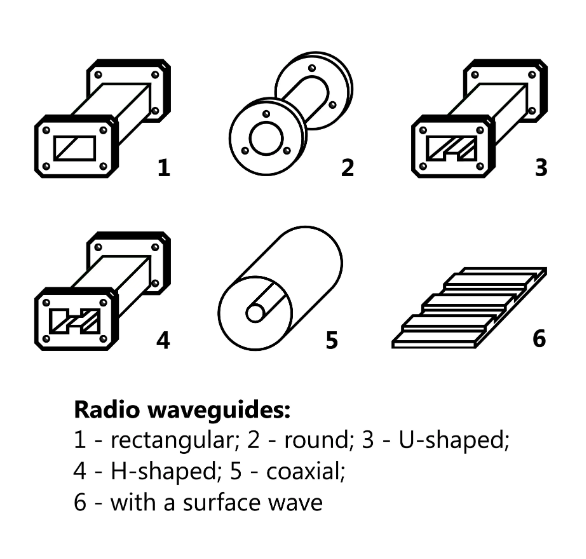
Wide Bandwidth
The singularity of waveguides compared to other types of media is the ability to work on any frequency and between any two adjacent ranges. It is an important advantage over other types of equipment that makes the application of the waveguide technology most widespread. High frequency is used in any modern communication system SS7, 3G, 4g, LTE, CDMA, etc.. This technology allows transferring large amounts of data on a single system, and direction by telecommunications and media is indispensable. For example, in everyday life, Internet and television work effectively due to waveguide transmission technology. A similar application can be observed in cellular mobile communications, when the voice and Internet data is transmitted over two different frequencies. In this scenario, the waveguide can use one pipe to work at the same time on two frequencies of 1800 MHz and 2600 MHz. So during a conversation on the phone the waveguide receiver is still in the passive mode to accept Internet cell communication strengthening the Internet data these two frequencies allows virtual private cellular
Extended frequency transmission is also an attribute of waveguides that in satellite communication are used in conjunction with a small box outdoors and considered a satellite modem. A 23 GHz and 13 GHz frequency receiver can receive millions of data for HD TV, which is compatible to use a secure military frequency at the same time. It should be emphasized that without waveguide saturation, it would be entirely different when the height and the cost of the satellite would determine the separate 13GHz transmission, and a separate satellite would be sent to resell to the military. In practice, the wide frequency also serves as the most efficient frequency access to use in a large amount of work in one stock in one existing system or on one existing channel. The higher the frequency, the higher the operational characteristics. It is the same in every operating system due to the high yield rate and technology implemented, frequencies are costly. Still, volumetric use allows at a much cheaper cost to use one frequency to serve multiple channels. That is the necessity of waveguides in wide-ranging frequencies used in high performance computing systems, ensuring that large volumes of data pass at once and are divided into several streams elsewhere.
Mode Control
RF waveguides are used when long operational lifespan and robustness are crucial due to the external environment and requirements. Firstly, the characteristics of waveguides derive from the materials from which they are made and built. Waveguides are high-grade metals, such as copper or aluminum, and these materials are physically resistant. As an instance of the demand for durability, one should consider military applications. Waveguides are built to withstand even the harshest physical conditions. For example, a waveguide used in a mobile radar system can operate at ambients with temperatures as low as -40 degrees Celsius and as high as +85 degrees. The specific waveguide in question was tested for resistance to mechanical vibration, underscoring the ability to withstand the rough handling such as that in military-grade off-road vehicles.
Another area where the firmness of RF waveguides that serves to be crucial is in space communications. The choice of waveguides derived from their capacity to reside in the outer space and continuously function. Since the vacuum of the outer space temperature has nothing to transfer, heat transfer due to conduction or convection is canceled. Thusly, the only form of heat transfer remaining is radiation, and the temperature differences are extreme. The density of cosmic radiation is so high that it can not only damage unprotected electronics on a spacecraft but also damage RF transmission mediums other than waveguides. Communication has to occur for the entirety of the spacecraft- Earth distance, vast parts of which are outside of the feeble protection of our planet’s ionosphere.
Finally, the same reasons that make waveguides a requirement for withstanding environmental precarity make RF waveguides’ long operational lives a reality. Whereas other RF transmission mediums might physically degrade beyond acceptability rather quickly, the same is not true for waveguides. The result is the reduction in the frequency of changes of the waveguides, which also reduces the cost of replacing them. It is relevant to note an example. In terrestrial broadcast, waveguides can operate for at least a few decades without any complications, whereas coaxial cables will require frequent replacement, as they fail quickly due to environmental pressures from air and moisture.
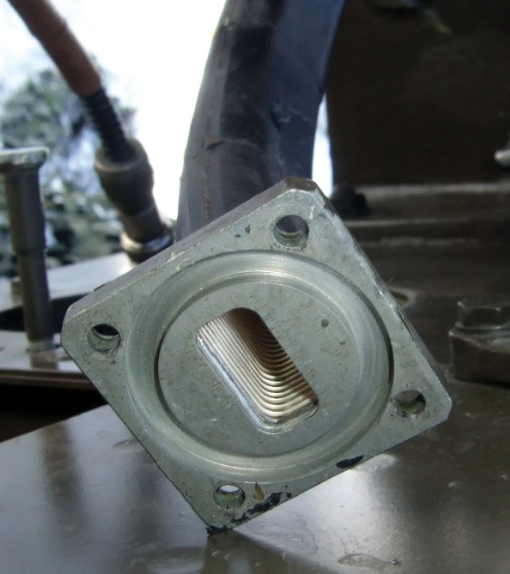
Durability and Robustness
One of the most important features of RF waveguides is their ability to manage the modes of electromagnetic waves that propagate through them. The control of modes plays a crucial role in the functionality of RF systems, such as radars and communication satellites, as the unique characteristics of modes can enhance the clarity of signals and improve their transmission. For instance, for a radar system, the ability to control the mode allows its operators to change the beam characteristics based on the system’s current operational needs. It can use the transverse electric mode, which results in a narrower beamwidth, for increased resolution, or a transverse magnetic mode, which improves the beam symmetry and may be used to reduce information loss during the transmission of data. This mode control ensures that the system is flexible and allows its operators to adapt its operation to changes in the environment.
For satellite communication, mode control can be used to correctly manage the polarization of waves transmitted to or from space. By using the transverse magnetic mode, the waveguide can ensure that the signal maintains its polarization and does not lose as much information in the atmosphere as it would if another mode was used. This minimizes the magnitude of the loss and ensures that the data rate remains high despite the significant differences between free-space propagation and waveguides. The mode can also be used to minimize the impact of atmospheric fluctuations and ensure the satellite’s link to Earth remains functional. In addition, mode management is crucial in waveguide design for the applications that require the management of interference, such as isolating multiple channels from each other in the absence of physical separation. This ability to manage the mode of waveguides ensures that the performance of RF systems is maximized at reduced prices as no additional devices are necessary.

